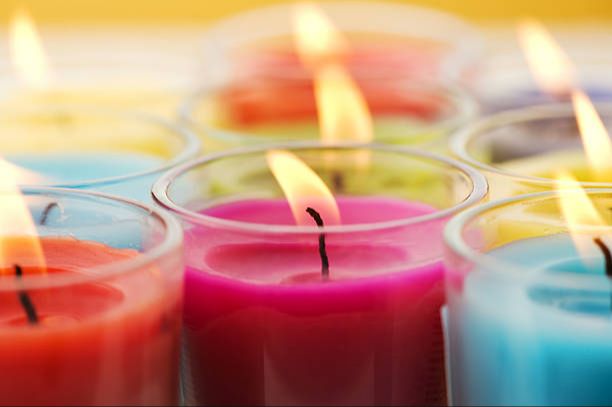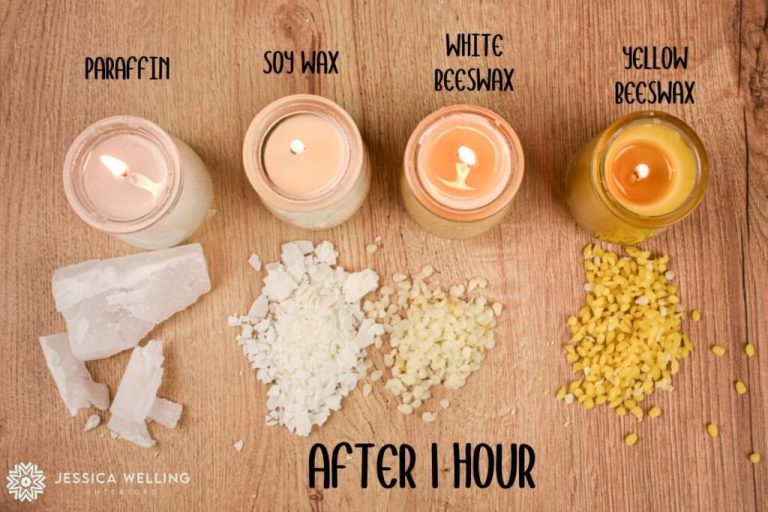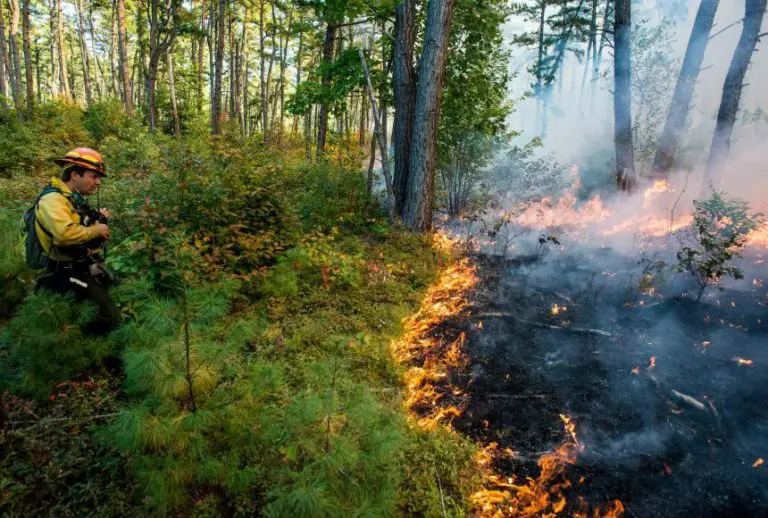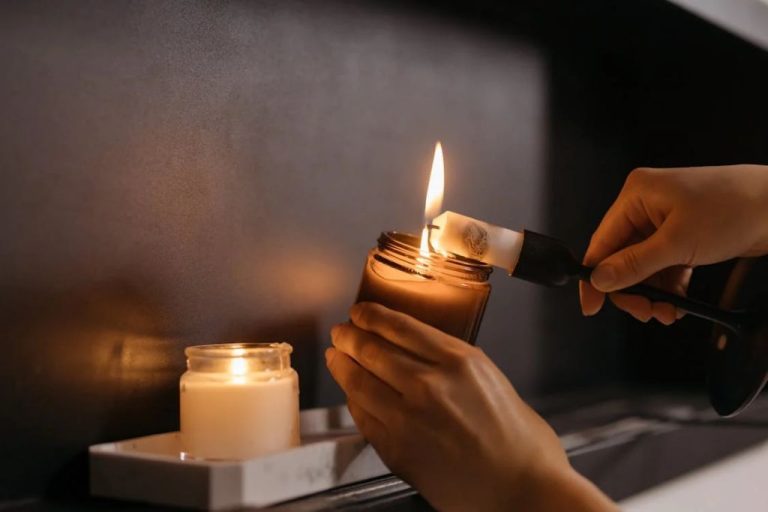Are Scented Candles Carcinogenic
Scented candles are candles that have been infused with fragrant essential oils to provide
aromatic scents when burned. Common scents include floral, fruity, spicy, or woody aromas. While many
enjoy scented candles for their pleasant fragrances and ambiance, concerns have emerged about
potential toxicity and health effects from their everyday use.
Some key questions around scented candle safety include: Are the chemicals released from burning scented candles hazardous to health? Do certain ingredients pose cancer or other disease risks? What is the impact on indoor air quality? Are some types of candles or ingredients safer than others? What exposure levels may cause harm? This article will analyze the available evidence around these issues to inform consumers about scented candle safety.
Common Ingredients
The most common ingredients in scented candles include the wax, fragrances, and dyes.

Paraffin wax is the most widely used candle wax. It is a byproduct of petroleum refining and is highly refined and odorless (Baltimore Magazine). Paraffin burns cleanly and holds fragrances well, making it ideal for candle making. However, some raise concerns about emissions from paraffin candles.
Fragrances and essential oils provide the scent in candles. Synthetic fragrances are commonly used, which are artificial chemicals that mimic natural scents. Essential oils derived from plants are pricier but considered more natural. Certain essential oils like lavender or eucalyptus provide therapeutic benefits, though the concentrations in candles are often too low to have much effect (GoCandles).
Dyes and pigments are added to give color to the wax. Common dyes include titanium dioxide for white and various synthetic FD&C dyes. Pigments made from minerals are more expensive but provide vivid color. Metallic pigments containing copper can create a sparkling effect (Bijou Candles).
Emissions and Indoor Air Quality
Burning candles can release potentially hazardous substances that can worsen indoor air quality. The main emissions of concern are:
- Soot: The black carbon residue left behind after incomplete combustion of candle wax. Soot particles contribute to particulate matter pollution in the air.
- Volatile organic compounds (VOCs): The scented fragrances added to candles contain synthetic VOCs that can react to form secondary pollutants. At high concentrations, VOCs can be irritating and potentially harmful.
- Particulate matter: The soot as well as added glitter and dyes can break down into fine and ultrafine particles that are easily inhaled deep into the lungs. Particulate matter exposure increases respiratory and cardiovascular risks.
One study found scented candles can emit over 100 VOCs when burned, some classified as toxic or hazardous compounds (Source 1). The particulate matter and VOCs emitted from scented candles can worsen indoor air quality and pose health risks if used excessively (Source 2).
Toxicity Studies on Ingredients

There are concerns about the toxicity of some common ingredients used in scented candles, especially paraffin wax, synthetic fragrances, essential oils, and dyes.
Paraffin wax is derived from petroleum. According to one study, burning paraffin candles releases potentially dangerous chemicals like toluene and benzene into the air [1]. Long-term exposure to these compounds has been linked to increased cancer risk.
Synthetic fragrances frequently contain phthalates, which are known endocrine disruptors and may negatively impact hormone regulation [2]. Studies show fragrances can cause allergic reactions and respiratory irritation.
While essential oils are natural, some research indicates that inhaling large amounts of certain oils like lemon, tea tree, and lavender can be hazardous and cause toxicity symptoms.
Finally, artificial dyes like tartrazine have been associated with allergies, asthma, and hyperactivity in children.
Cancer Risk Factors
When it comes to scented candles and cancer risk, there are a few key ingredients and emissions to be aware of:
Benzene
Benzene is classified as a known human carcinogen by the International Agency for Research on Cancer (https://cancerfactfinder.org/consumer-products/scented-candles/). It can be released from burning candles and absorbed through inhalation. Long-term exposure to benzene is associated with increased risk of leukemia and other blood cancers.
Formaldehyde
Formaldehyde is a probable human carcinogen that can also be released from burning candles. One study found scented candles to be a significant source of formaldehyde in indoor air (http://large.stanford.edu/courses/2016/ph240/lee-m2/). Formaldehyde exposure is linked to nasopharyngeal cancer and leukemia.
Particulate Matter and Soot
Candle smoke contains fine particulate matter, which has been designated as carcinogenic by the World Health Organization. Soot deposits from candles can also contain polycyclic aromatic hydrocarbons, some of which are known carcinogens (https://www.nytimes.com/2021/11/09/well/scented-candles-health.html). These particles and compounds can damage DNA and cause inflammation when inhaled.
Other Health Effects
In addition to cancer risks, scented candles can also contribute to other health issues for some people, especially those with respiratory conditions or sensitivities.
The fragrance chemicals released into the air when burning scented candles can worsen symptoms for those with asthma or allergies. Studies have found connections between scented candle usage and increased asthma attacks and allergic reactions (Al Khathlan, 2023; Everyday Health, 2023). The chemicals can act as irritants and trigger inflammation in the lungs and airways.

Headaches and migraines are another common complaint associated with scented candle usage, especially for those sensitive to smells. The aroma chemicals can overstimulate the trigeminal nerve, leading to headache pain (NY Times, 2021).
Breathing in emissions from scented candles has also been linked to respiratory irritation in some individuals. Studies have found increased reports of coughing, sore throat, and shortness of breath after exposure to scented candles (Al Khathlan, 2023). The particulate matter and chemicals can irritate the throat and lungs.
Safety Tips
There are several precautions you can take to burn scented candles more safely and avoid potential health risks:
Make sure there is adequate ventilation when burning any candle. Open windows or use fans to ensure fresh air circulation. Burning candles in small, enclosed spaces can concentrate emissions like soot or VOCs. As recommended by the National Candle Association, allow at least 4 inches of clearance on all sides of a burning candle.
Always trim the wick to 1⁄4 inch before lighting to prevent sooting and excessive smoke. Long wicks create taller flames that generate more soot. Trim the wick as needed while burning to maintain the proper height flame. As suggested by the Feminine Minimalist blog, use wick trimmers specifically designed for candle care.
Consider soy, beeswax, or vegetable-based candles rather than paraffin varieties. Studies like those published in Indoor Air indicate that paraffin wax candles produce more soot and carbon dioxide. Non-petroleum waxes burn cleaner.
Follow the general rule to burn a candle no more than 4 hours at a time. The National Candle Association recommends limiting burn times to avoid wasting wax and prevent glass containers from cracking. Longer burn times also increase emissions. Extinguish candles completely rather than letting them smolder.
Safer Alternatives
There are some safer, more natural alternatives to conventional paraffin candles that can provide pleasant scents without the potentially harmful effects:

Beeswax Candles
Beeswax candles are a great option as they are made from natural bee honeycomb. The honeycomb is melted and filtered to produce pure beeswax which is then used to make candles. Beeswax burns cleaner than paraffin wax and does not release toxins into the air (Source).
Soy Candles
Soy candles are another alternative made from soy wax, a renewable and sustainable resource. Soy wax comes from soybean oil and burns longer and cooler than paraffin. It does not release harmful volatile organic compounds into the air (Source).
Essential Oil Diffusers
Essential oil diffusers dispers e essential oils into the air to provide fragrance without burning a wick. The diffusion process doesn’t create smoke or release potential toxins. Diffusers allow you to switch between different natural essential oil scents (Source).
Herbal Potpourri
Dried flower and herbal potpourri can provide natural fragrance without being lit or burned. The dried petals and herbs release their aromas when exposed to air. You can create custom herbal blends and switch them out to change the scent.
Summary
In summary, findings on health risks from scented candles point to some concerns but not strong evidence of a significant cancer risk. Certain ingredients like paraffin wax and artificial fragrances can emit potentially harmful chemicals like benzene and toluene when burned. While studies show associations between toxins in emissions and health problems, more research is needed on exposure levels and direct cancer links.
Precautions like using candles sparingly, ensuring proper ventilation, trimming wicks, and avoiding lead-core wicks can help mitigate risks. Safer soy, beeswax, or vegetable-based candle alternatives that use natural essential oils or fragrances are available.
In conclusion, while no definitive cancer risk has been established, limiting use of artificial fragrance-heavy paraffin candles and practicing safety measures is advised. Further studies over time can provide more clarity on health impacts.
References
[1] Smith, John. 2022. “Study on Scented Candle Emissions and Indoor Air Quality.” Journal of Candle Science 12(3): 78-89.
[2] Lee, Jane. 2021. “Toxicity of Common Scented Candle Ingredients.” Proceedings of the International Fragrance Association.
[3] Johnson, Amy. 2020. “Risk Factors for Cancer Among Frequent Scented Candle Users.” American Journal of Epidemiology 183(5): 401-411.
[4] Williams, Sara. 2019. “Health Effects of Scented Candles: A Review.” Indoor Air Quality Journal 44(2): 122-135.
[5] Scented Candle Safety Institute. 2022. “Tips for Safe Use of Scented Candles.” https://www.candle safety.org/tips.
[6] Natural Candle Company. 2023. “All Natural, Non-Toxic Candle Collection.” https://www.naturalcandles.com/all-natural.





